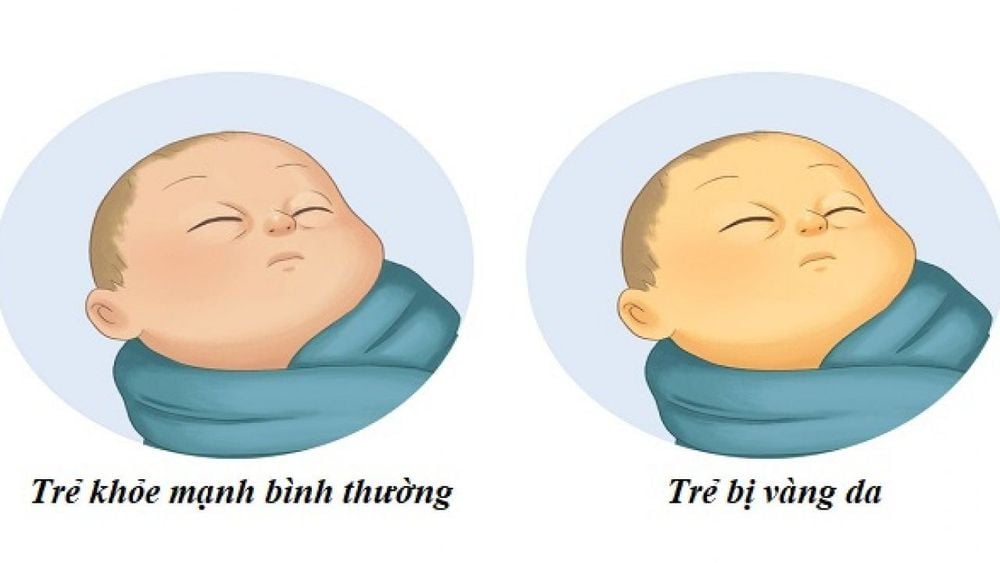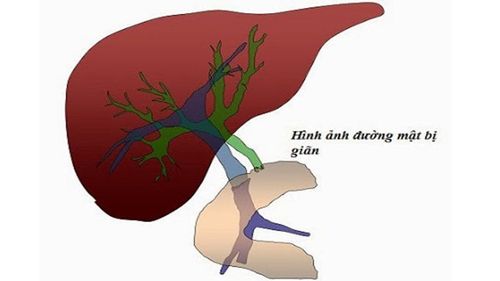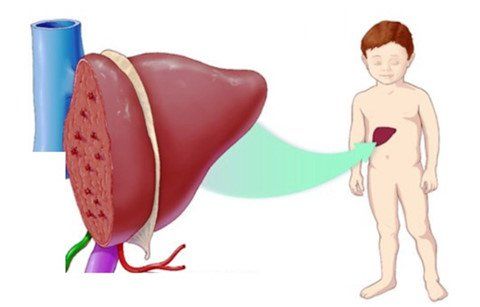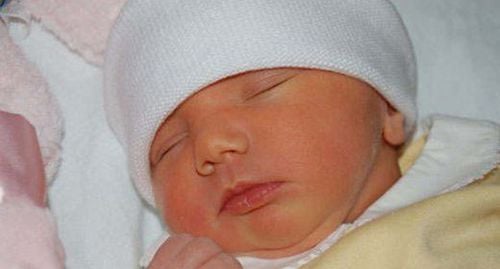This is an automatically translated article.
The article is professionally consulted by resident Doctor Le Thanh Tuan - Department of General Surgery - Vinmec Nha Trang International General Hospital.
Jaundice in newborns is a manifestation of one of the diseases such as anemia, hepatitis or physiological jaundice or even congenital biliary atresia. The distinction between these diseases is to determine the direction of treatment for the child.
1. What is congenital biliary atresia?
Congenital biliary atresia is a disease of the liver and biliary tract, manifested by disruption or deficiency of the extrahepatic biliary system leading to obstruction of the natural outflow of bile. The cause of the disease is usually due to an abnormality in the pregnancy stage or the consequences of poisoning or viruses.2. Manifestations of congenital biliary atresia
Children with congenital biliary atresia may have either intrahepatic biliary atresia or extrahepatic biliary atresia. Atrophic jaundice is one of the two typical symptoms of the disease along with discolored stools. The degree of yellowing of the skin and mucous membranes of the eyes and the change of stool depends on the state of biliary atresia.
The mechanism of occurrence of these symptoms is as follows:
Discoloration of stools: When the bile ducts are atrophied, bile salts and bile pigments in the liver cannot enter the small intestine through the normal bile duct, causing the child's stool to have different colors such as: raw feces (white like stork droppings), grayish white like clay or pale yellow. The baby's urine is also darker yellow and clothes or diapers are difficult to clean. Jaundice: symptoms are not specific because they appear in other diseases but are typical for abnormally elevated bilirubin in the blood When the disease is advanced and untreated, cirrhosis of the liver may appear such as: Hepatosplenomegaly, ascites or collateral circulation are very dangerous

3. Definite diagnosis of congenital biliary atresia
When a child has signs of jaundice, it is necessary to take the child to a medical facility for examination, testing and treatment. Definitive diagnosis of congenital biliary atresia should be based on both clinical and laboratory findings as follows:
Jaundice lasting more than 2 weeks has an initial screening value Discoloration of stools with increasing status has a high value in Diagnostic sensitivity is about 90% Dark urine Enlarged, firm liver on palpation. Enlarged spleen suggests advanced cirrhosis and portal hypertension. Direct bilirubin test is higher than 2 mg/dl or greater than 20 % Total Bilirubin Ultrasound is an important diagnostic value. If the intrahepatic or common hepatic duct atrophy, ultrasonography may not show the extrahepatic biliary tract, the intrahepatic biliary tract is dilated or lost, the gallbladder does not atrophy, and does not change in size after feeding. If there is atrophy of the end of the common bile duct, ultrasound shows a dilated part of the extrahepatic or intrahepatic bile ducts, showing the gallbladder. Liver scan is the test with the highest diagnostic value, so it should be performed in facilities with good conditions. for early diagnosis and surgery Infection tests to help diagnose the causative agent (TORCH).

4. Differential diagnosis of congenital biliary atresia
With symptoms of non-specific jaundice because it occurs simultaneously with other diseases, when diagnosing congenital biliary atresia, it is necessary to differentiate it from the following diseases:
Physiological jaundice: This is a yellowing of the skin. Because the number of red blood cells of newborns is quite large, when the cells are regularly broken down to replace new ones, there is a stagnation of bilirubin in the blood that the baby's liver is not mature enough to filter out. jaundice. To distinguish it from congenital biliary atresia, physiological jaundice only lasts for the first 2 weeks after birth and the degree of jaundice gradually decreases, while pathological jaundice will not improve but become more and more severe. Congenital hemolytic anemia: Congenital hemolytic anemia, which causes bilirubin to accumulate in the blood, also causes jaundice, but it is usually paler, inconspicuous, with repeated anemia and splenomegaly, so it can be distinguished from splenomegaly. Congenital biliary atresia Hepatitis in children : Hepatitis in children is rarer than in adults, with the causative agent being usually viral. Manifestations of hepatitis in children also include jaundice, hyperbilirubinemia, and metabolic disorders such as hypoglycemia and coagulation disorders secondary to low levels of vitamin K-dependent factors. Parents who observe the clinical manifestations of biliary atresia in their children should soon take their children to reputable hospitals to perform modern diagnostic methods. Early diagnosis and detection of the disease contributes to improving the chances of successful treatment for children.
Doctor Le Thanh Tuan has experience in examination, treatment and surgery of abdominal diseases (both open surgery and laparoscopic surgery). In particular, the doctor has strengths in pediatric surgery to treat diseases such as: intussusception, appendicitis, inguinal hernia, postpartum malformations (fetal peritonitis, megacolon, no anus).
Please dial HOTLINE for more information or register for an appointment HERE. Download MyVinmec app to make appointments faster and to manage your bookings easily.














